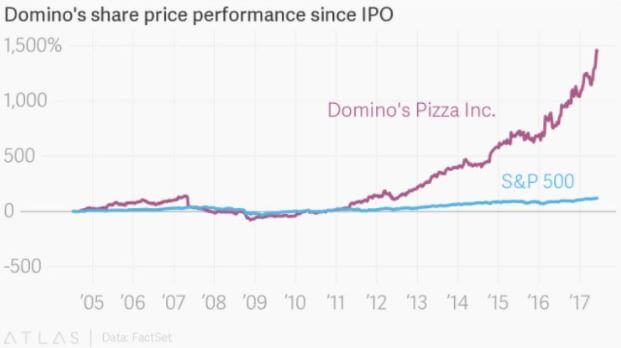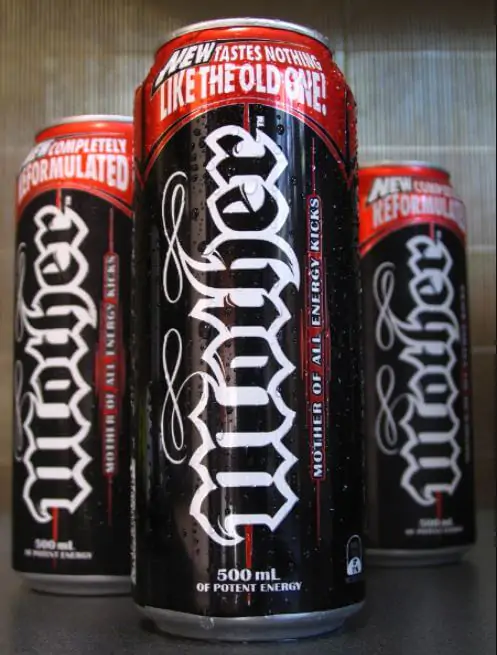3 Key Elements of Successful Rebranding and Brand Repositioning
Most companies will need rebranding and brand repositioning at some point in time. Periods of little to no growth are good indicators that the time has arrived for your company to look into the rebranding process and think about brand repositioning.
What is rebranding? Rebranding is the process of changing the image of your company.
What’s the definition of repositioning? Brand repositioning is about changing the customer’s understanding of what the product or brand is.
When you’re thinking of rebranding or brand repositioning and you’re trying to decide which changes need to be implemented, it’s important to remember that you can’t satisfy everyone.
You can, however, listen to your customers and learn which changes to your product will satisfy the largest majority. This is key to making your rebranding strategy + brand repositioning a success.
This video takes a good look at what all successful rebranding and brand repositioning strategies have in common:
Given the fact that public perception is crucial to a brand repositioning strategy, social listening plays a key role here. Finding public conversations and mentions about your brand or product will clue you in on what people are saying about your product, and whether or not it’s consistent with your brand.
Social listening tools help automate the process by automatically finding mentions of your brand or product, and them dropping them directly inside your account so you can take a closer look at them all together.
Listen to what your customers are saying about you. Get important insights with a social listening tool like Brand24 and find out if it’s time for your marketing strategy to include a new brand identity.
The 3 key elements of successful rebranding + brand repositioning are based on:
- Listening to your customers.
- Delivering relevant improvements to your product.
- Convincing customers to give you a second chance.
If you can listen to your customers, deliver on their expectations, and convince them to give you a second chance, then you’ll be able to successfully introduce a new brand promise and shift your marketing efforts into a new segment.

Notice how all 3 points (listening, delivering, and convincing… especially listening) converge. This is crucial to successful rebranding and brand repositioning. Why? Because you can’t have one without the others.
- If you try to deliver improvements to your product without first listening to your customers’ needs, you can make the wrong changes that don’t improve the customer experience and brand image at all.
- If you attempt to convince your customers to give your product a second chance without addressing the dissatisfaction that you learned from listening, your plea will lack relevance and fall on deaf ears.
It takes a combination of all 3 steps to to make your rebranding and/or brand repositioning strategy a success.
Apply a combination of listening, delivering, and convincing to stimulate and boost growth – like Domino’s and Mother Energy Drinks did in the brand repositioning + rebranding examples below!
Domino’s
Domino’s pizza is one of the largest pizza chains in the world, with more than 13.8 K locations in over 80 different countries. But, it hasn’t always been so popular. In fact, just a few years ago, the pizza delivery chain was failing to reach their customers’ expectations and as a result, experiencing very slow growth.
So how did cardboard Domino’s end up spreading to 80+ countries? (Fun fact – there is even a Domino’s in the pizza capital of the world: Italy!) By applying the 3 key elements of rebranding and brand repositioning.
Step 1. Listen to find out if you need rebranding or brand repositioning
“Domino’s crust tastes like cardboard and their sauce tastes like ketchup. Honestly, you couldn’t pay me to eat it.” Sharon
“It might get there in 30 minutes, but you’re not going to want to eat it once it gets there.” Saul
“Totally agreed. Domino’s tastes like cardboard. Microwave pizza is far superior.” Tad
Their critics were tough, but Domino’s kept listening because they knew their customers’ opinions held the keys to the success that they were after. If you want to shift your brand identity you need to know how the customers perceive your company.
Try the top social listening and media monitoring tool for free!
Step 2. Deliver
The problem was clear: they needed to improve their pizza to maintain existing customers and attract new ones. Significant amounts of time and money were invested towards developing new recipes, which resulted in total product repositioning: brand new recipes for their pizzas using new ingredients. Now, it was just a matter of this little problem:
How would they convince their unsatisfied customers to give them a second chance?
Step 3. Convince
This is the tough part. If you Google the phrase ‘new and improved’, you get 8 billion results. A campaign marketing Domino’s pizza as new and improved would just get lost somewhere in those 8 million results. This isn’t a way to introduce the new brand messaging.
And Domino’s knew that. Which is why they opted for total transparency with one of the most self-deprecating campaigns to date.
In their video campaign, the Domino’s Pizza Turnaround, they addressed all the issues that unsatisfied customers had experienced with their old recipes and apologized for selling pizzas that ‘tasted like cardboard’. They also promised that their new recipes were now pizzas that they were proud to deliver.
The results?
The new brand positioning seems to be working:

(Source: Atlas)
*Important Bonus
After years of delivering less-than-satisfactory pizzas, Domino’s knew it wouldn’t be enough to simply improve their recipes. One of the first pizza delivery chains in America, they were determined to continue with their tradition of innovation. Technology has become a key component in their business, both internally and externally. From the way their business is run, to the modern solutions that their customers have to choose from when ordering & paying, Domino’s has changed more than just their recipes.
This also reminds me of Mother Energy Drinks in Australia.
Mother Energy Drinks
Coca Cola had implemented a hard launch of Mother Energy Drinks onto the Australian market during the energy drink craze, which garnered immediate attention. Clever advertisements drew consumers who were eager to try the new product, but apart from initial sampling, sales remained stagnant. However, failure was not an option for Mother.
And since they had been so successful at generating brand awareness (most people in Australia had at least heard of Mother after the launch), instead of abandoning the new product, they chose to change the brand positioning to stay on the market.
Step 1. Listen
By listening to their customers, they quickly learned that the reason Mother wasn’t selling was because consumers just didn’t enjoy the taste. While the fun advertisements had attracted many customers who were eager to try a new drink, they were put off by the taste and few turned into repeat buyers.
Step 2. Deliver
Coca Cola’s Mother Energy Drinks did 3 things to improve the product:
- Changed the product packaging
- Increased the size of the can
- Adjusted the taste

Now, they were ready for the challenging part. Since consumers had already begun to associate Mother Energy Drinks with unappealing taste, their biggest challenge would be to convince consumers to give the drink another try.
Step 3. Convince
The company addressed this head-on in their campaign to reposition Mother Energy Drinks with a very direct slogan ‘New Mother, tastes nothing like the old one’. This was printed clearly on their product packaging and featured in humorous videos for their audience, where soldiers were shown tracking down and taking out the scientists involved in engineering such an unpalatable taste.
Results
Their rebranding and new positioning strategy worked and the energy drink was saved from becoming obsolete. Consumers were willing to give their bold statement a try. Mother had a fresh start and is now one of the top-selling energy drinks in Australia, alongside of Red Bull and Rockstar.
Deeply Queensland. pic.twitter.com/p7Ue2rcHfV
— AtticusThomas (@AtticusThomas) September 2, 2017
Do you need rebranding or brand repositioning?
Domino’s and Mother Energy Drinks are just a couple companies that have been able to bounce back from periods of little to no growth. They successfully boosted their sales with re-branding and brand re-positioning.
If your brand has been experiencing slow growth, don’t panic! It just means that it’s time to make some changes. Learn what the problem is by listening to your customers. Is it the time to reposition your brand?
Here’s my insider listening tip.
Scroll back up and take another look at the conversations about Domino’s and Mother Energy Drinks above. See anything unusual? I’ll give you a hint:
NOT A SINGLE ONE OF THE MENTIONS FOR DOMINO’S AND MOTHER ENERGY DRINKS WERE DIRECTED @ THE BRANDS OR EVEN CONTAINED ANY #HASHTAGS FOR THE BRANDS!
(Sorry for shouting but there’s an important lesson here.)
It all boils down to listening.
To be a good listener, you need to be aware of all publicly available mentions of your brand or product, even the ones that are not directed at your company and do not contain any of your branded hashtags. Everybody else can see them; make sure you do too. Finding these publicly hidden conversations is exactly what Brand24 is for. Find out what your customers are saying about your company with a free trial. If you’re new to social listening, here’s a good resource that’s full of social listening tips that’ll point you in the right direction.
Uncover candid conversations about your brand and your product. This will help you determine if it’s time for you to reposition your brand and apply the 3-point rebranding checklist above. If the answer’s yes and your customers are telling you that you’re one of many brands that need new positioning, just follow the steps above:
- Listen to your customers.
- Deliver relevant improvements to your product.
- Think about how you can convince your customers to give your product a second chance.
These are the 3 key elements of successful rebranding + brand repositioning!
Read also: 5 Successful Rebranding Examples to Get Inspired By




![What is Brand Awareness? Guide & 9 Powerful Tactics to Build It [2022]](png/15-the-ultimate-guide-to-brand-awareness-1400x660x2-640x300.png)

